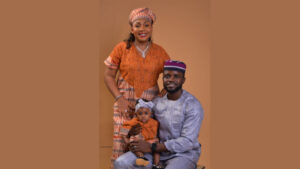
WASHINGTON (BP)–Researchers in Australia are applying for permission to help parents conceive specially selected babies whose primary aim will be to save the life of siblings with a fatal blood disease, CNSNews.com reported.
The procedure, already used once — apparently successfully — in the U.S., has set off debate, as the potential benefits, risks and ethical implications are weighed against each other.
Doctors at the Monash Institute of Reproduction and Development in Melbourne are to seek approval in the days ahead on behalf of three couples, two Australian and one from New Zealand, who have children suffering from Fanconi anemia, a disorder that kills many victims before adulthood.
The couples want to undergo in-vitro fertilization (IVF) treatment, have a suitable embryo selected, implanted into the womb and carried to term. At the birth, blood will be removed from the newborns’ umbilical cord and the cells transplanted into the sick sibling.
The selection phase is two-fold — the embryo must firstly not itself carry the disease, and secondly, its tissue must match that of the sick child.
Already, screening of embryos is often carried out prior to IVF treatment, to prevent genetic abnormalities from being passed on. The procedure is called pre-implantation genetic diagnosis (PGD) and is opposed by many pro-lifers.
But tissue type-testing at that stage of the reproductive process has not been allowed in most countries up to now.
Prof. Alan Trounson, an IVF specialist at the Monash Center, rejected claims that what he wanted to do constituted genetic engineering. “It’s cell therapy,” he said, “no different from any bone marrow transplant.”
Trounson said he was confident the plan would be approved by the IVF ethics body in the state of Victoria, the Infertility Treatment Authority.
A spokesperson for the authority said it would have to assess the legality of the matter.
Named for a Swiss pediatrician, Guido Fanconi, Fanconi anemia is an inherited disorder that leads to bone marrow failure. It affects one in 300,000 children, of all ethnic backgrounds.
A successful transplant of bone marrow or umbilical cord blood cells can save the life of a sufferer. In the three couples’ cases, all have been unable to find a matching donor for a marrow transplant.
Any second child they have through natural means would have a one in four chance of inheriting the defective gene from both parents — and even if it did not, it would not necessarily be able to provide a tissue match for the sick sibling.
Margaret Tighe, a leading Australian pro-life campaigner, warned that allowing the procedure to go ahead could open a Pandora’s box, with parents eventually being able to select embryos for physical characteristics or athletic ability, while those not chosen were destroyed.
Early-stage human beings would be subject to “some sort of experiment without its consent,” she said. “There are boundaries you shouldn’t cross.”
In August 2000, Colorado parents Lisa and Jack Nash had a IVF baby in order to save the life of their six-year-old daughter, who was dying from Fanconi anemia. Reports six months later said the treatment had been successful.
The Australian specialists decided to go ahead with the application after Britain’s regulatory body earlier this month agreed parents there could have PGD and tissue typing of their embryos to produce a child whose blood cells could be used to treat an existing son, who has another blood disorder.
The UK Human Fertilization and Embryology Authority stipulated that this should only happen “in very rare circumstances and under strict controls,” that all other avenues to cure the sick child should have been exhausted, and that embryos should not be genetically modified to provide a tissue match.
Even with those restrictions, the decision drew fire from pro-lifers in Britain, who said that while curing a sick child was a “noble aim,” it would not be in the best interests of the baby being produced.
“All children should be accepted and loved unconditionally,” said Nick Harris of the campaign group, Life. “Any child resulting from this procedure will be chosen and accepted only on condition that they can provide tissue for another person.
“As this child grows, the parents will have to explain that he/she wouldn’t exist if it weren’t for the bone marrow he/she happens to carry. This could be a terrible burden for any person to shoulder.”
–Ethical dilemma
Some proponents see it differently, pointing out that many parents decide to have another child for any number of reasons, some of them questionable, rather than simply for the sake of having one.
The geneticist involved in the Nash case in the U.S. argued at the time some couples have a baby in a bid to save a failing marriage, or to benefit from tax breaks.
Dr. Jan Crosthwaite, a senior lecturer in medical ethics at the University of Auckland in New Zealand, took a similar approach Thursday, noting that some babies were planned primarily to provide a companion for an existing, only child.
Crosthwaite said it was generally felt in the ethics community that a procedure could be seen as acceptable if the risk to the child is minimal, if good will result, and if the end could not be achieved in any other way.
“If you put that sort of reasoning across in this particular case, it would seem to give a reasonable argument for what’s going on,” she added.
“In my own view, the issue is a matter of whether you can do more good than harm, in a way that is respectful of human relationships.”
She conceded that, if one held the opinion that “it’s wrong to ever use a person as a means to somebody else’s end, then you’d have a serious concern about whether children are being conceived as instruments for others.”
“Also, some people have been very concerned about whether a parent ever has the right to subject a child to procedures for other than his own good.”
Supporters of advances in human reproductive technology often cite the “therapeutic” aim of procedures like embryo selection or embryonic stem cell experimentation.
Some would argue that it would be unethical not to use all available means to save a life. Such a contention came up during the debate in the U.S. ahead of President Bush’s much-anticipated announcement last August about federal funding for embryonic stem cell research.
But Crosthwaite said that there were always moral limits to what one could do to reach a worthwhile aim.
She cited a commonly-used riposte to the argument: If you have five dying patients in a hospital ward, each in desperate need a particular organ donation, would you butcher one of them to save the other four?
“You can’t say it’s unethical not to save those [four] lives,” she said. “It depends on what the action is that would be necessary to do so.”
–30–
Goodenough is the Pacific Rim Bureau Chief for CNSNews.com. Used by permission.
















